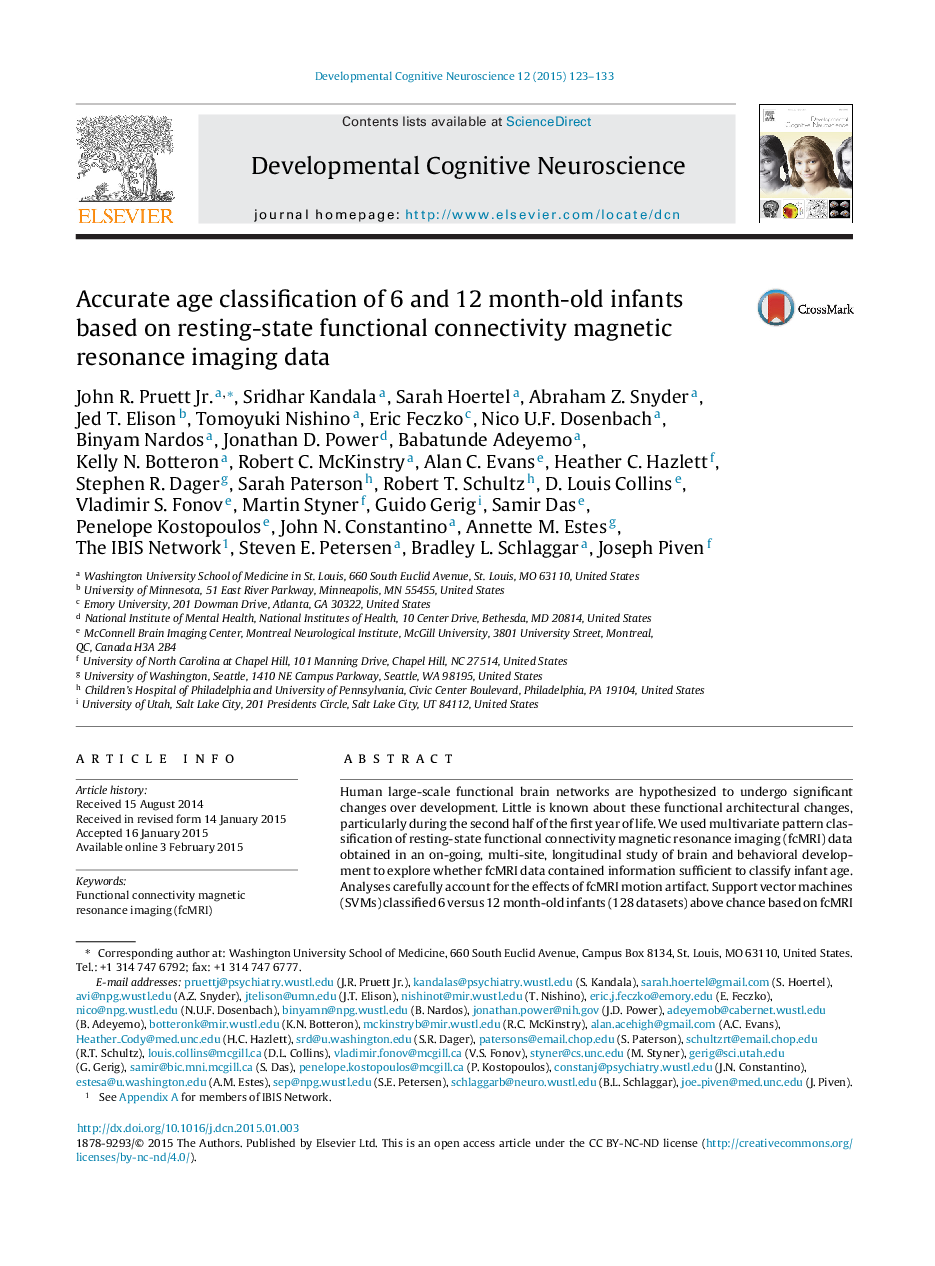| Article ID | Journal | Published Year | Pages | File Type |
|---|---|---|---|---|
| 4316595 | Developmental Cognitive Neuroscience | 2015 | 11 Pages |
•SVMs classified 6 versus 12 month-old infants above chance based on fcMRI data alone.•We carefully accounted for the effects of fcMRI motion artifact.•These results coincide with a period of dramatic change in infant development.•Two interpretations about connections supporting this age categorization are given.
ABSTRACTHuman large-scale functional brain networks are hypothesized to undergo significant changes over development. Little is known about these functional architectural changes, particularly during the second half of the first year of life. We used multivariate pattern classification of resting-state functional connectivity magnetic resonance imaging (fcMRI) data obtained in an on-going, multi-site, longitudinal study of brain and behavioral development to explore whether fcMRI data contained information sufficient to classify infant age. Analyses carefully account for the effects of fcMRI motion artifact. Support vector machines (SVMs) classified 6 versus 12 month-old infants (128 datasets) above chance based on fcMRI data alone. Results demonstrate significant changes in measures of brain functional organization that coincide with a special period of dramatic change in infant motor, cognitive, and social development. Explorations of the most different correlations used for SVM lead to two different interpretations about functional connections that support 6 versus 12-month age categorization.
